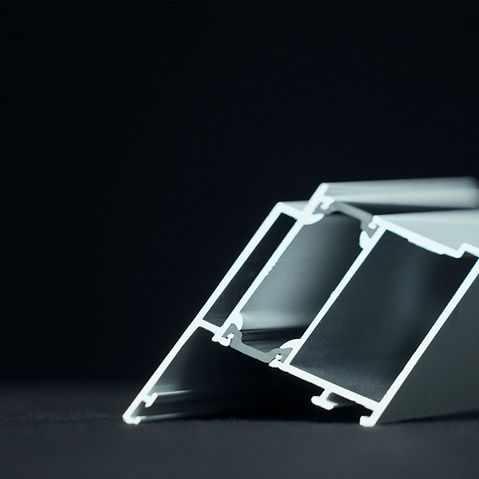
By selecting the right materials, fabricators can actively control embodied emissions in the building envelope and therefore have a positive effect on the carbon footprint of the building. Furthermore, materials already installed will have to be reused to a greater extent in future so that they can contribute to sustainability as recycled materials in the circular economy.
Low carbon aluminium and ultra-low carbon aluminium
Aluminium is an ideal material for reducing embodied emissions. The sustainable material and recyclate can be recycled endlessly and boast low CO₂ emissions, even when reused multiple times.
In particular, special aluminium grades can reduce the carbon footprint of a building as early as the construction stage. The Schüco low carbon and ultra-low carbon aluminium grades contain far less embodied carbon than traditional aluminium types, thanks to the use of recycled aluminium and of green electricity during manufacturing, among other things.
Embodied carbon means the CO₂ emissions in a material that are created during production of the units. The EPD for profiles made from Schüco low carbon aluminium reports a value of less than 4.47 CO₂e/kg and the value for Schüco ultra-low carbon profiles is even below 2.27 CO₂e/kg.
The type of profile surface finish, such as anodisation or powder coating, also has a significant impact on the CO₂ value of the building envelope. Anodised aluminium coatings applied using anodisation incorporate more CO₂ into the building envelope than the more energy-efficient powder coatings. Choosing powder coatings makes it possible to reduce the CO₂ incorporated into buildings units such as the façade construction in a targeted way.
Hybrid constructions such as combining timber and aluminium as an extension structure can also help reduce the carbon footprint. However, when choosing a suitable material with the least possible carbon footprint, you must check if the material is right for the specific building requirements and whether it can fulfil its function.